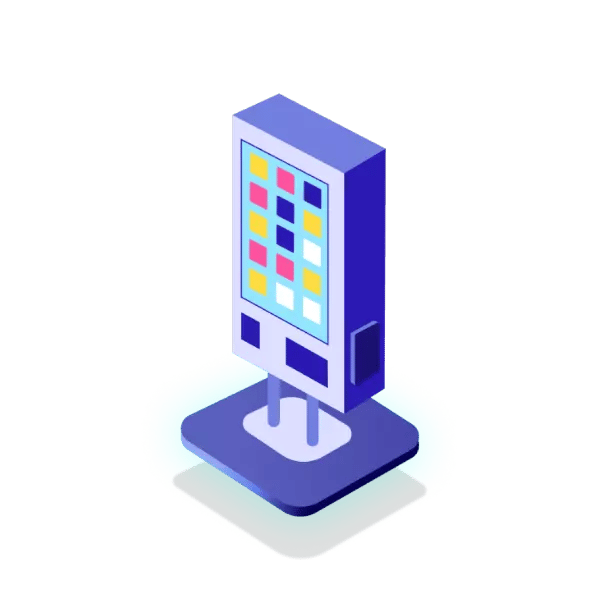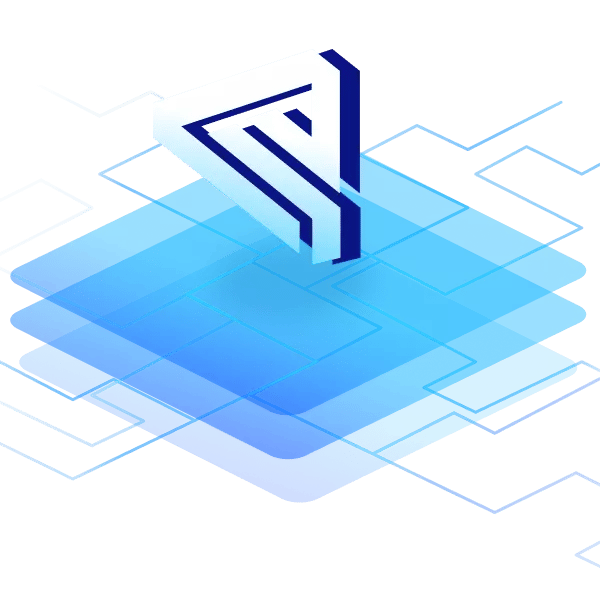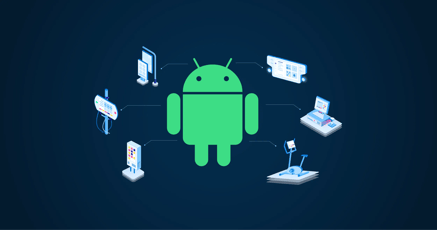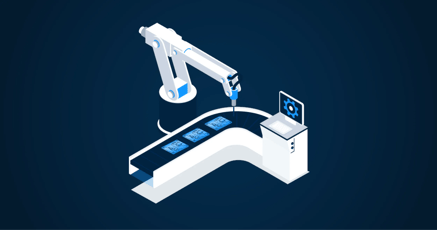Whether you’re in charge of a sprawling international retail chain or the head of several local retail stores, the need to properly manage retail devices has never been more important.
Managing retail devices remotely is required both from a legal and an efficiency perspective. Growing data protection regulations mean that all retail devices must be properly secured and that certain data is encrypted. Likewise, apps running on these devices need to be kept up to date.
The way these apps are managed is called MDM, or Mobile Device Management.
Retail MDM (Mobile Device Management): What is it?
Let’s imagine a retail chain of 20 stores with headquarters in California, branch offices in several US states, and a few interspersed throughout Europe. They also have a branch in Germany, which has some of the most stringent data privacy regulations in the world. Every store has several devices running Android, such as POS (Point of Sale) systems and Kiosk terminals.

Source: ESB Professional / Shutterstock
In addition, there could also be devices at the store that allow employees to check company emails, receive branded training, engage in team chats, and so on. You have probably already imagined the nightmare associated with distributing and managing these devices.
Such problems include:
- Quickly provisioning devices according to the latest HQ policies
- Updating login details
- Easily updating all devices
- Easily replacing devices
- Tracking device use Protecting lost devices
- Disabling GPS and privacy-sensitive information on the device
Trying to do all of the above would be an absolute nightmare without retail MDM.
The MDM meaning in retail is Mobile Device Management. It is a way to remotely manage retail devices.
Using an efficient retail MDM product—where devices can be provisioned, updated, and completely managed from a single computer in a remote location—store managers are able to keep their fleet of devices working properly no matter what.
MDM in retail is an essential tool for any retail operation.
A look inside how MDM retail works
Let’s delve into the specifics of the many different ways that retail MDM can assist retailers with their various devices, whether those devices are a POS device at a checkout point, or some other type of device.
Device management dashboard
All retail MDM functionality operates from a central dashboard where a fleet manager can take all the necessary actions to remotely manage any and every device.
MDM solutions run entirely in the cloud, so fleet managers and branch managers can control all devices from any browser on any computer to remotely manage all devices.
Separate fleets by branch and/or function
One of the reasons why MDM in the retail industry is so vital is that there can be multiple devices to manage, and a proper retail MDM hub will give you the option to separate devices into different “fleets.”
MDM retail fleets can be created based on location as well as function. For example, there could be a “Germany Branch” fleet, applying to all devices in the Germany branch, and there could also be a “Germany Branch POS” fleet that would control only the POS devices in your Germany branch.
Because Germany has very stringent data protection regulations, devices in that retail MDM fleet group would need the most restrictive policies applied to them. Using retail MDM, this is as simple as clicking a few buttons and pushing the policies over to the new devices, including turning off GPS and other privacy-related features.
Update devices easily
New laws in Europe require that software on devices are updated regularly. Failing to do so can result in fines. Retail MDM makes this easy.
The standard way to update devices is using what the industry calls “over-the-air” or OTA updates. There is quite a bit of internal plumbing required to run these updates successfully although the MDM retail operator shouldn’t have to worry about it. From the retail MDM operator’s perspective, running a device update should be as simple as clicking a button, and that’s precisely what the emteria Device Hub does!
Rolling back failed updates
A corollary to device updates is the ability to “rollback” failed updates. Nothing could be worse in MDM in retail than updating 100 devices on a Sunday evening only to discover on Monday morning that no one at the store can now operate their devices, or that all the POS devices have stopped working!
Proper MDM retail functionality means that devices can be:
- Updated in groups, meaning you only update a subset of devices and then update more once you are sure they are all functioning properly.
- Rolled back if the update failed. Again, the plumbing behind this is enormous. Successful MDM in the retail industry is not only about a pretty device hub. The infrastructure behind operating fleets of devices needs to be in place.
Device tracking
Various scenarios make device tracking imperative in a retail context, the most important of which is for lost devices.
One lost laptop can cost approximately $49,000 to replace, according to research from the Ponemon Institute. This is due to work disruptions, potential data breaches (as occurred in West Virginia when a laptop was stolen), time spent reconfiguring a new laptop, and other factors. Every lost mobile device can cost a business at least $2,500, according to the same research.
Device tracking can help find missing devices. MDM in retail is essential for this functionality.
Device lockdown
Company devices should not be used for anything other than business purposes. MDM in retail gives fleet managers the option to lock down devices so that only certain types of apps can be used on them. This can also be used to turn devices into special “kiosk” mode devices where only a single application is accessible. This is useful for product display or POS devices.
Content management
Retail MDM is the way to properly feed content to devices. This content can be anything from price lists, PDF documents with product features, CRM data with customer details, training materials, videos, and so on.
With a strong retail MDM platform, fleet managers can send this content over to single devices, groups, or to the entire fleet.
This is particularly important in a retail context where just-in-time (JIT) learning and microlearning have proven to be so effective.
JIT training refers to users being able to find information on their devices easily, precisely when they need it, such as when a customer is standing in front of them looking for details about a certain product. With the proper content fed to the device, the sales associate can show the customer the precise content required.
MDM in retail therefore makes training retail employees far more efficient.
Remote support
One of the most useful features of retail MDM is the option to deliver remote support to users. IT admins and fleet managers can remotely connect to any retail device that belongs to the fleet so they can debug any problems with it. Depending on the issues found, the MDM retail fleet manager can then take action, all from within the dashboard, to remotely fix any errors.
Remote wipe and security
In the case that a device is lost or stolen, MDM retail fleet managers can remotely wipe the device, lock it, or change its password. In a world where data breaches can cripple a business, such functionality is vital in retail MDM.
Setting device policies
MDM retail offers the ability to set device policies remotely. This is an easy way to enforce a specific set of device rules with one command.
These policy rules can include:
- The strength of password required on the device
- How many days a password is valid for before it needs to be reset
- How long a device can stay idle before it locks itself
- Whether or not the device must be encrypted
- The types of applications that are allowed on the device
- Blocking a device that has been compromised

Source: ESB Professional / Shutterstock
Why MDM in the retail industry?
MDM in retail ensures that retail devices follow a retail business’s best practices and that corporate data is secure. It improves the use of devices in retail environments and enables efficient management of devices from a remote location.
The use cases for MDM solutions in retail are diverse and constantly evolving due to digitization initiatives and innovative shopping solutions. All the more important is it to remotely monitor and maintain device fleets through online services.
Emteria offers a a fully-fledged system that handles MDM for retail and other industries managing Android-based devices such as POS systems, kiosk terminals and self-checkout systems. Emteria’s Device Hub offers everything that MDM retail fleet managers need to manage entire fleets of devices.
Learn more about how to manage Android-based retail devices. ⬇️
Manage your Android-based retail solutions remotely
See why emteria is the chosen Android™ customization & management platform for product builders — build Android products based on your requirements with all enterprise features you need.







